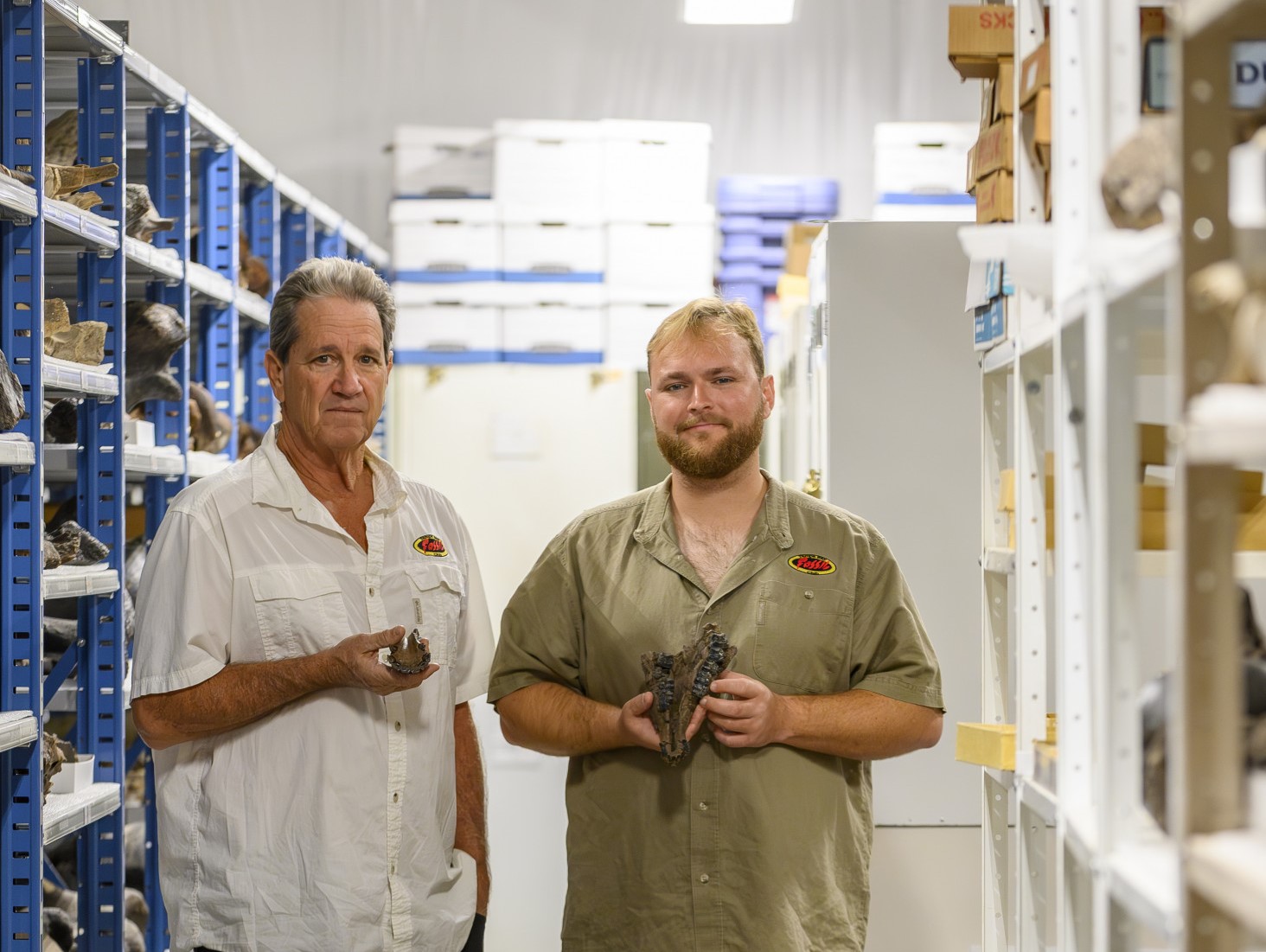Divers have discovered 500,000-year-old animal fossils including ancient horses, sloths and armadillos.
Collectors Robert Sinibaldi and Joseph Branin were exploring a sinkhole when they made the astonishing find.
For years, the pair has been diving in their home state of Florida, hoping to uncover hidden treasures.
READ MORE: Stunned couple find live tortoise under flooring they laid 10 YEARS ago
They were on the Steinhatchee River, in the Big Bend region, when they discovered the remains, as reported by What’s The Jam.
Around half a million years ago, several horses, sloths and armadillos were recorded to have fallen into the sinkhole and died.
Over time, it naturally filled with sediment, preserving the animals where they lay and in turn turning them into fossils.
According to Robert and Joseph, combing the riverbed for fossils wasn’t easy as the water was full of tannins, which significantly reduced visibility.
At the time of their big discovery, they thought they weren’t having much luck and were preparing to move on from the area.
But then Joseph looked down and happened to spot some horse teeth.
As they continued looking, they uncovered a hoof core and then a tapir skull.
The finds continued to rack up, with many fossils in pristine condition.
Robert said: “It wasn’t just quantity, it was quality.
“We knew we had an important site, but we didn’t know how important.”
The duo then shared their findings with the Florida Museum of Natural History, where palaeontologists determined they were preserved during an obscure period of the Pleistocene ice ages called the middle Irvingtonian.
Robert and Joseph discovered the fossils in 2022 but the find was revealed in a statement from Florida Museum on 12 February.
Rachel Narducci, vertebrate palaeontology collections manager at the Florida Museum, said: “The fossil record everywhere, not just in Florida, is lacking the interval that the site is from – the middle Irvingtonian North American land mammal age.
“Before the discovery, there had only been one other Florida site with fossils from this time period.
“While there are few fossils from the middle Irvingtonian, there are plenty from the periods just before and after.
“Paleontologists know from the record that some species from the early Pleistocene go extinct, while others appear for the first time in the late Pleistocene.”
The fossils recovered from the Steinhatchee River even include a now-extinct genus Holmesina, which resembles a modern-day armadillo, only larger.
When the species first appeared in Florida two million years ago, they averaged at around 150 pounds.
Over time, the creatures became larger and larger until being classified as a new species known as Holmesina septentrionalis, which grew up to around 475 pounds.
Altogether, 552 fossils have been recovered so far at the Steinhatchee River site.
Joseph called Florida a “lucky state” for his hobby.
He said: “We have a permit system that allows people to collect fossils on state-owned lands, unlike a lot of places where there’s more barrier to entry to doing that.”
Further collection at the site will be a slow, ongoing process, given the logistical challenges of excavating an ancient sinkhole underwater.
But the searchers are hopeful they will find even more fossils.
READ MORE: Fearless sunseeker pulls beached shark out to sea with his bare hands
